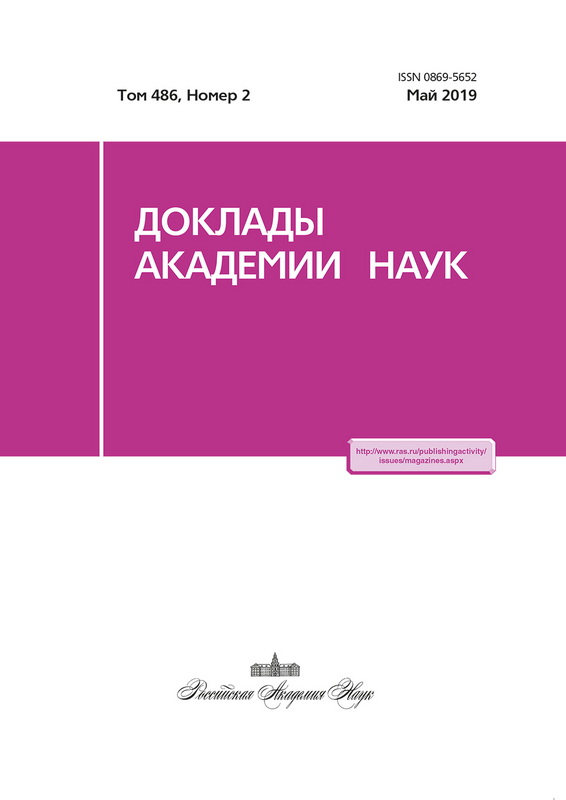Bicycronic construct for optogenetic prosthesis of ganglion cell receptive field of degenerated retina
- Authors: Petrovskaya L.E.1,2, Roshchin M.V.3, Smirnova G.R.3, Kolotova D.E.3,4, Balaban P.M.3, Ostrovsky M.A.4,5, Malyshev A.Y.3
-
Affiliations:
- The Russian National Research Medical University named after N.I. Pirogov
- Shemyakin & Ovchinnikov Institute of Bioorganic Chemistry of the Russian Academy of Sciences
- Institute of Higher Nervous Activity and Neurophysiology of the Russian Academy of Sciences
- Lomonosov Moscow State University
- Institute of Biochemical Physics of the Russian Academy of Sciences
- Issue: Vol 486, No 2 (2019)
- Pages: 258-261
- Section: Biochemistry, biophysics, molecular biology
- URL: https://journals.eco-vector.com/0869-5652/article/view/13452
- DOI: https://doi.org/10.31857/S0869-56524862258-261
- ID: 13452
Cite item
Abstract
For the purpose of optogenetic prosthetics of the receptive field of the retinal ganglion cell, we have created a bicistronic genetic construct that carries genes of excitatory (channelorhodopsin2) and inhibitory (anionic channelorhodopsin) rhodopsins. A distinctive feature of this construct is the combination of two genes into one construct with the mutant IRES inserted between them, which ensures precise ratio of the expression levels of the first and second gene in each transfected cell. It was found that the illumination of the central part of transfected neuron with light with a wavelength of 470 nm causes the generation of action potentials in the cell. At the same time, light stimulation of the periphery of the neuron causes cessation of the generation of action potentials. Thus, we were able to simulate the ON-OFF interaction of the receptive field of the retinal ganglion cell using optogenetic methods. Theoretically, this construction can be used for optogenetic prosthetics of degenerative retina in case of its delivery to ganglion cells using lentiviral vectors.
About the authors
L. E. Petrovskaya
The Russian National Research Medical University named after N.I. Pirogov; Shemyakin & Ovchinnikov Institute of Bioorganic Chemistry of the Russian Academy of Sciences
Email: malyshev@ihna.ru
Russian Federation, 1, Ostrovityanova street, Moscow, 117997; 16/10, Miklukho-Maklaya Street, Moscow, 117997
M. V. Roshchin
Institute of Higher Nervous Activity and Neurophysiology of the Russian Academy of Sciences
Email: malyshev@ihna.ru
Russian Federation, 5A, Butlerov street, Moscow, 117485
G. R. Smirnova
Institute of Higher Nervous Activity and Neurophysiology of the Russian Academy of Sciences
Email: malyshev@ihna.ru
Russian Federation, 5A, Butlerov street, Moscow, 117485
D. E. Kolotova
Institute of Higher Nervous Activity and Neurophysiology of the Russian Academy of Sciences; Lomonosov Moscow State University
Email: malyshev@ihna.ru
Russian Federation, 5A, Butlerov street, Moscow, 117485; 1, Leninskie gory, Moscow, 119991
P. M. Balaban
Institute of Higher Nervous Activity and Neurophysiology of the Russian Academy of Sciences
Email: malyshev@ihna.ru
Corresponding Member of the Russian Academy of Sciences
Russian Federation, 5A, Butlerov street, Moscow, 117485M. A. Ostrovsky
Lomonosov Moscow State University; Institute of Biochemical Physics of the Russian Academy of Sciences
Email: malyshev@ihna.ru
Academician of the Russian Academy of Sciences
Russian Federation, 1, Leninskie gory, Moscow, 119991; 4, Kosygina street, Moscow, 119991A. Y. Malyshev
Institute of Higher Nervous Activity and Neurophysiology of the Russian Academy of Sciences
Author for correspondence.
Email: malyshev@ihna.ru
Russian Federation, 5A, Butlerov street, Moscow, 117485
References
- Greenberg K.P., Pham A., Werblin F. S. // Neuron. 2011. V. 69. P. 713-720.
- Wu C., Ivanova E., Zhang Y., Pan Z. H. // PLoS One. 2013. V. 8. P. e66332.
- Долгих Д.А., Малышев А. Ю., Рощин М. В., Смирнова Г.Р., Некрасова О. В., Петровская Л. Е., Фельдман Т. Б., Балабан П. М., Кирпичников М. П., Островский М. А. // ДАН. 2016. Т. 471. № 6. С. 729-731.
- Koh E.Y., Ho S. C., Mariati, Song Z., Bi X., Bardor M., Yang Y. // PLoS One. 2013. V. 8. P. e82100.
- Петровская Л.Е., Штефанюк В. С., Балабан П. М., Островский М. А., Малышев А. Ю. // Нейрохимия. 2017. Т. 34. № 4. С. 275-280.
- Govorunova E.G., Sineshchekov O. A., Janz R., Liu X., Spudich J. L. // Science. 2015. V. 349. № 6248. P. 647-650.
Supplementary files







